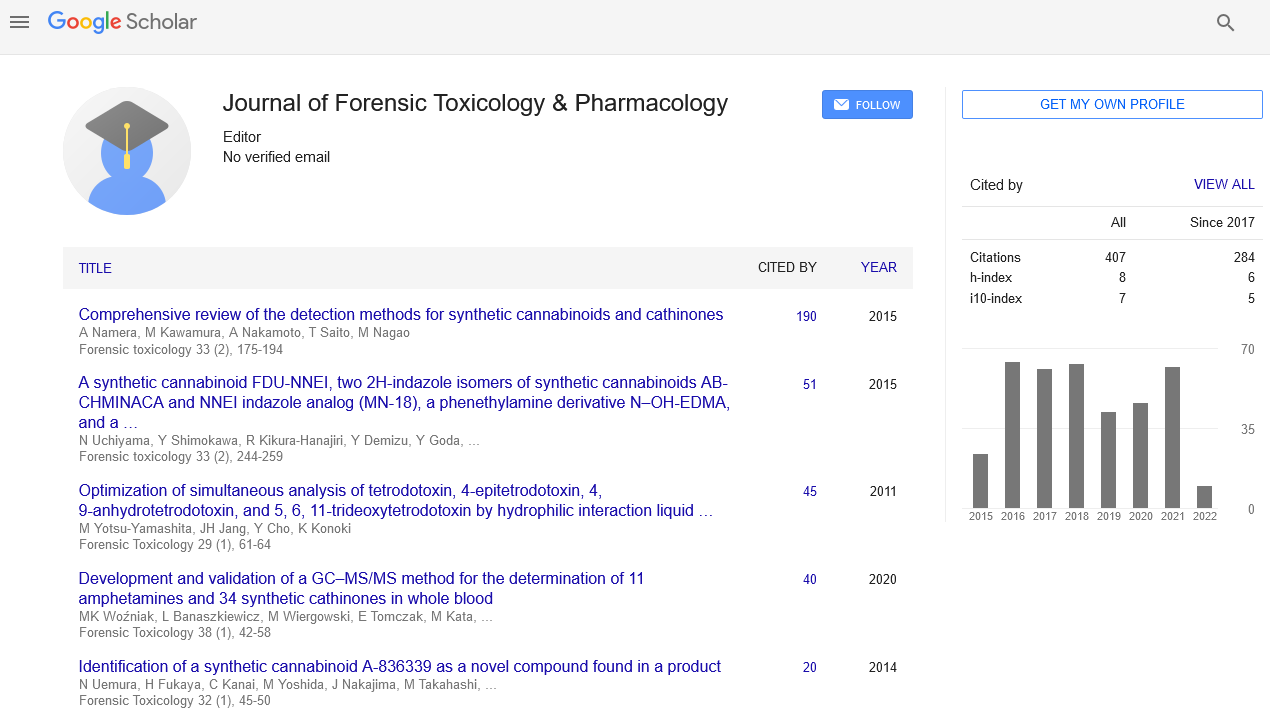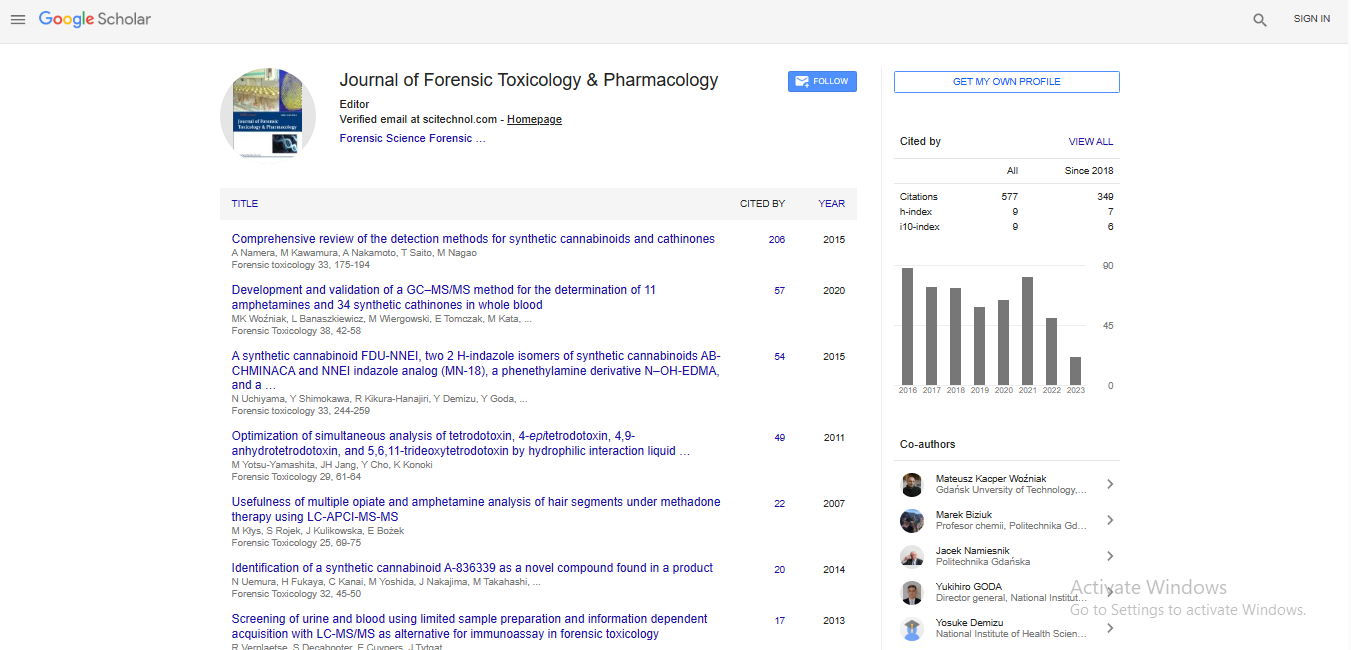Review Article, J Forensic Toxicol Pharmacol Vol: 4 Issue: 2
Deferiprone as a Potential Treatment for Neurodegeneration with Brain Iron Accumulation
| Germin G Fahim1,2*, Roshani Patolia1, Daniel Garber1 and Evelyn R Hermes-DeSantis1,3 | |
| 1Ernest Mario School of Pharmacy, Rutgers the State University, New Jersey, USA |
|
| 2Monmouth Medical Center, New Jersey, USA | |
| 3Robert Wood Johnson University Hospital, New Jersey, USA | |
| Corresponding author : Germin G Fahim Ernest Mario School of Pharmacy, Rutgers the State University, Monmouth Medical Center, New Jersey Tel: +7322225200; Fax: 7329236757 E-mail: Germin.Fahim@pharmacy.rutgers.edu |
|
| Received: March 25, 2015 Accepted: April 27, 2015 Published: April 29, 2015 | |
| Citation: Fahim GG, Patolia R, Garber D, Hermes-DeSantis ER (2015) Deferiprone as a Potential Treatment for Neurodegeneration with Brain Iron Accumulation. J Forensic Toxicol Pharmacol 4:2. doi:10.4172/2325-9841.1000138 |
Abstract
Deferiprone as a Potential Treatment for Neurodegeneration with Brain Iron Accumulation
Neurodegeneration with brain iron accumulation (NBIA) encompasses a genetically heterogeneous group of rare and progressive diseases with debilitating sequelae. The major clinical finding associated with these diseases is iron accumulation in the basal ganglia. This iron accumulation is thought to have a significant impact on disease symptomatology and progression. Deferiprone is an iron chelator that crosses the blood brain barrier and removes excess iron associated with the Parkinsonlike symptoms and the developmental delay. We conducted a literature search using Medline and EMBASE to identify efficacy and safety studies of deferiprone use in NBIA. Deferiprone showed the ability to significantly decrease brain iron with concomitant symptom improvement in some patients, but not in others. Because deferiprone has the potential to cause agranulocytosis and neutropenia, further studies are needed in order to determine its true safety and efficacy in NBIA. Standard methods for measuring brain iron and normal ranges for brain iron measurements are needed before the utility of brain iron chelation therapy can be quantified. Furthermore, the clinical benefits of deferiprone therapy and the patient population most likely to benefit from therapy needs to be determined by larger, randomized, studies.
 Spanish
Spanish  Chinese
Chinese  Russian
Russian  German
German  French
French  Japanese
Japanese  Portuguese
Portuguese  Hindi
Hindi 
